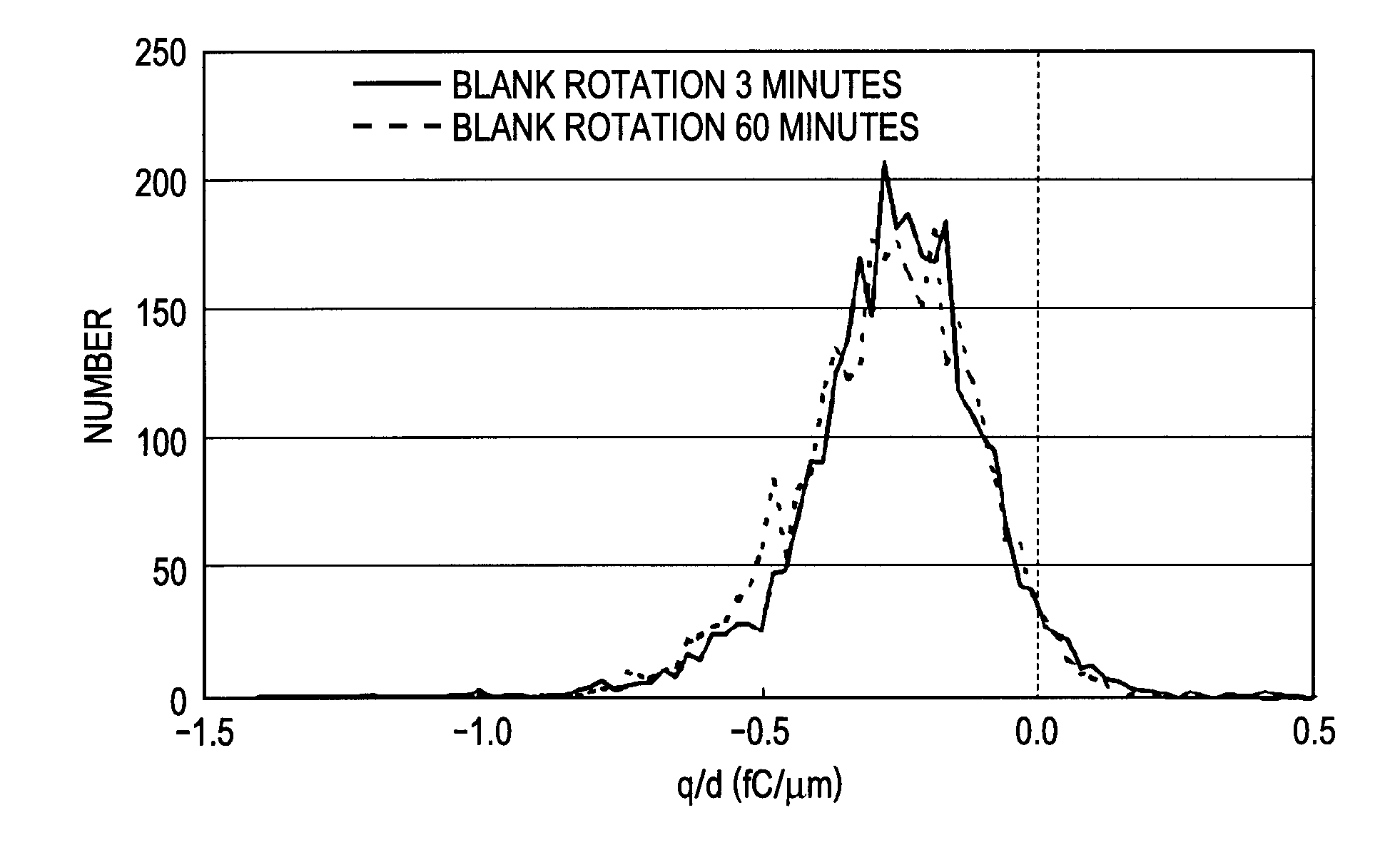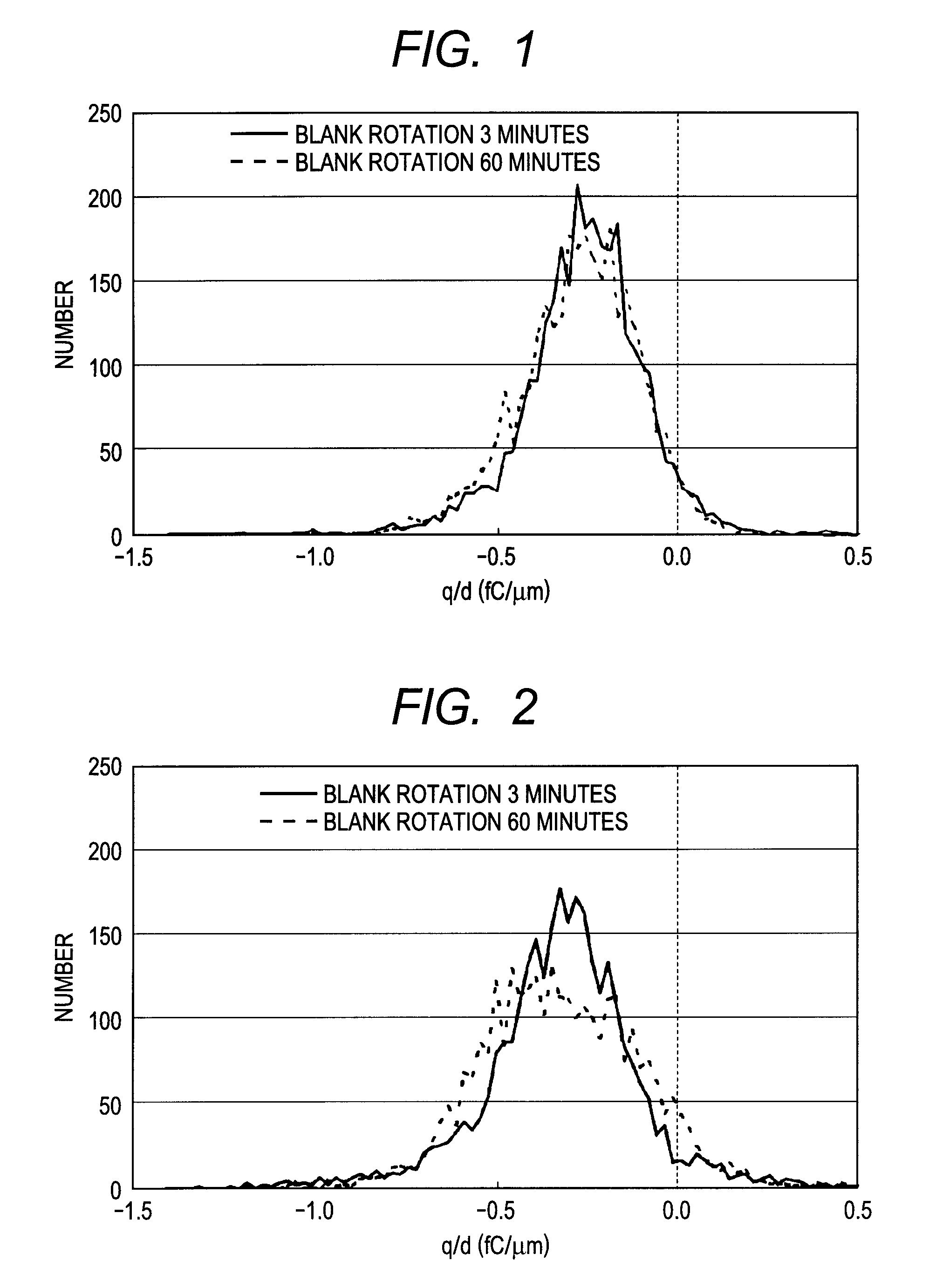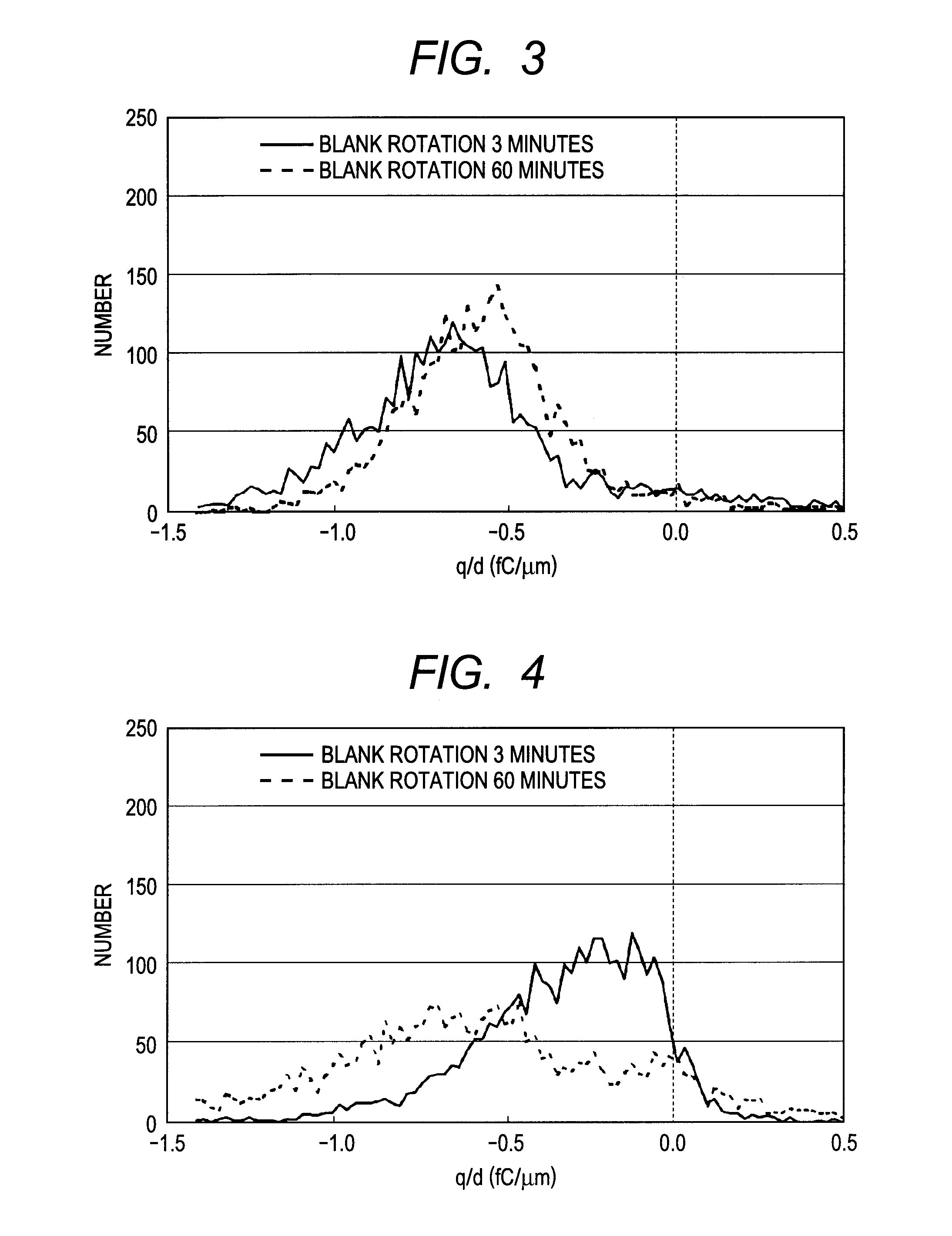Toner
a technology of toner and spherical paper, which is applied in the field of toner, can solve the problems of deterioration of toner development characteristics, uneven distribution of toner charge, and special attention to problems, and achieve excellent charge rise and charge stability, and sharp charge distribution
- Summary
- Abstract
- Description
- Claims
- Application Information
AI Technical Summary
Benefits of technology
Problems solved by technology
Method used
Image
Examples
synthesis example 7
of a PA Resin (PA-7)
[0195]Production of Polyester P-2: 67.8 Parts of a 2.2 mole adduct of bisphenol A-propylene oxide, 22.2 parts of terephthalic acid, 10.0 parts of trimellitic anhydride, and 0.005 parts of dibutyltin oxide were added into a four-necked flask. A thermometer, stirring rod, condenser, and nitrogen inlet tube were attached to the flask, and then the mixture was reacted at 220° C. for 5 hours under a nitrogen atmosphere to obtain polyester resin P-2. The hydroxyl value of this resin P-2 was measured to be 4.8 mgKOH / g.
[0196]Next, a reaction tank equipped with a condenser, a stirrer, a thermometer, and a nitrogen inlet tube was charged with 80 parts of the polyester resin P-2 and 20 parts of 4-aminobenzene sulfonic acid, then charged with 270 parts of pyridine. The resultant mixture was stirred, then charged with 96 parts of triphenyl phosphite, and heated at 120° C. for 6 hours. After the reaction finished, the mixture was reprecipitated in 360 parts of ethanol, and rec...
synthesis example 1
of a PB Resin (PB-1)
[0197]A reaction vessel equipped with a stirrer, a condenser, a thermometer, and a nitrogen inlet tube was charged with 200 parts of xylene, which was then refluxed under a nitrogen flow.
[0198]Next, 9.0 parts of 5-vinylsalicylic acid, 75.0 parts of styrene, 16.0 parts of 2-ethylhexyl acrylate, and 5.0 parts of dimethyl-2,2′-azobis(2-methylpropionate) were mixed. The resultant mixture was added into the reaction vessel while stirring, and then held for 10 hours. Subsequently, the solvent was removed by distillation, and the resultant product was dried at 40° C. under reduced pressure to obtain resin PB-1. The obtained resin PB-1 was confirmed to have a hydroxyl value of 30.3 mgKOH / g, specifically, contain 540 μmol / g of a unit derived from salicylic acid, based on the results of measuring the hydroxyl value.
synthesis example 2
of a PB Resin (PB-2)
[0199]Resin PB-2 was obtained by performing resin PB synthesis in the same manner as in the Synthesis Example 1, except that the following materials were used.[0200]12.0 parts of 3-tertiary butyl-5-vinylsalicylic acid[0201]72.0 parts of styrene[0202]16.0 parts of 2-ethylhexyl acrylate[0203]5.0 parts of dimethyl-2,2′-azobis(2-methylpropionate)
[0204]The obtained resin PB-2 was confirmed to have a hydroxyl value of 28.7 mgKOH / g, specifically, contain 511μmol / g of a unit derived from salicylic acid, based on the results of measuring the hydroxyl value.
PUM
| Property | Measurement | Unit |
|---|---|---|
| molar ratio | aaaaa | aaaaa |
| molar ratio | aaaaa | aaaaa |
| temperature | aaaaa | aaaaa |
Abstract
Description
Claims
Application Information
 Login to View More
Login to View More - R&D
- Intellectual Property
- Life Sciences
- Materials
- Tech Scout
- Unparalleled Data Quality
- Higher Quality Content
- 60% Fewer Hallucinations
Browse by: Latest US Patents, China's latest patents, Technical Efficacy Thesaurus, Application Domain, Technology Topic, Popular Technical Reports.
© 2025 PatSnap. All rights reserved.Legal|Privacy policy|Modern Slavery Act Transparency Statement|Sitemap|About US| Contact US: help@patsnap.com



